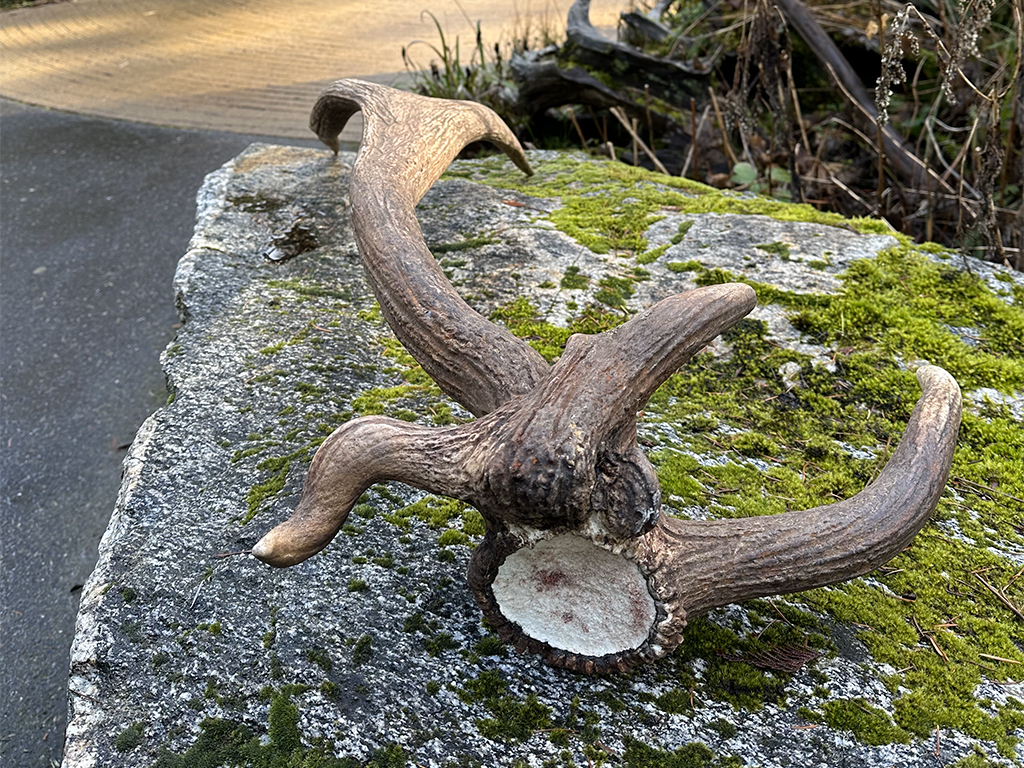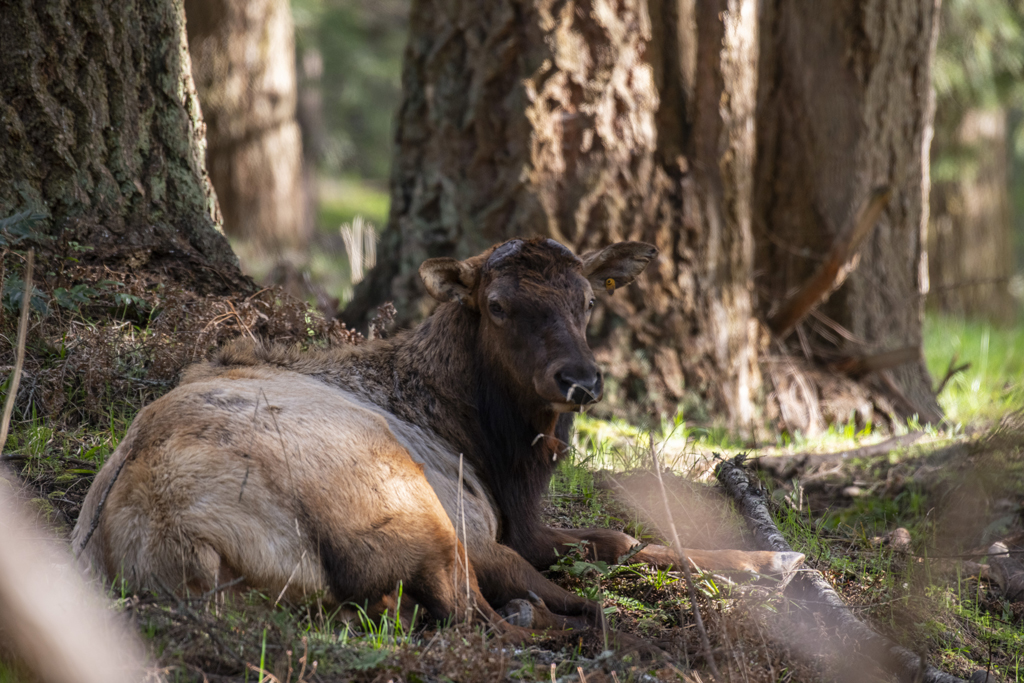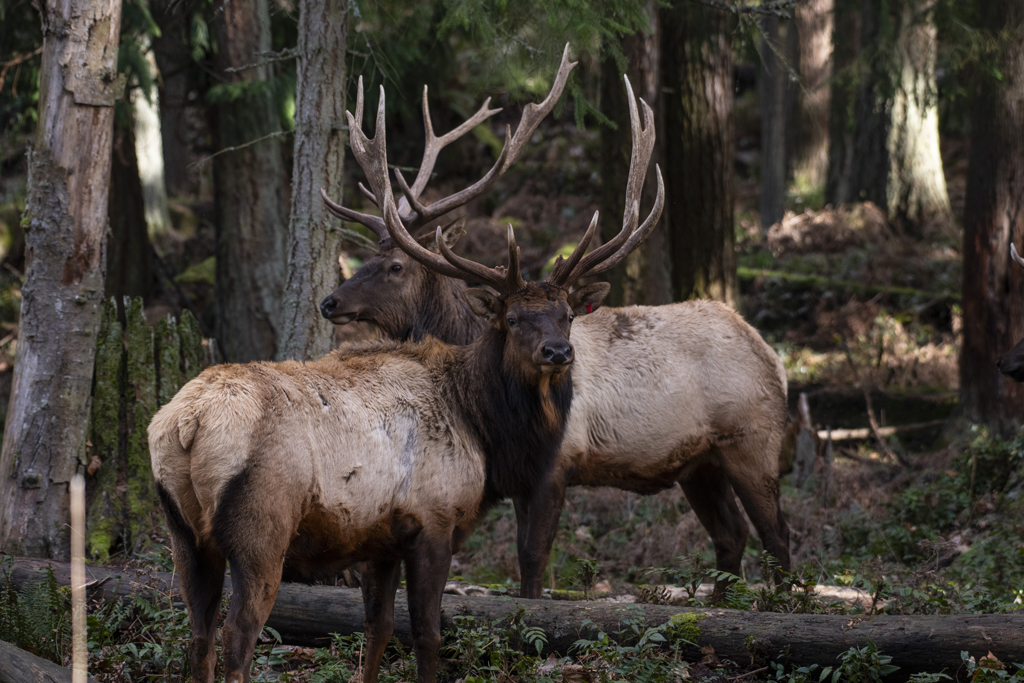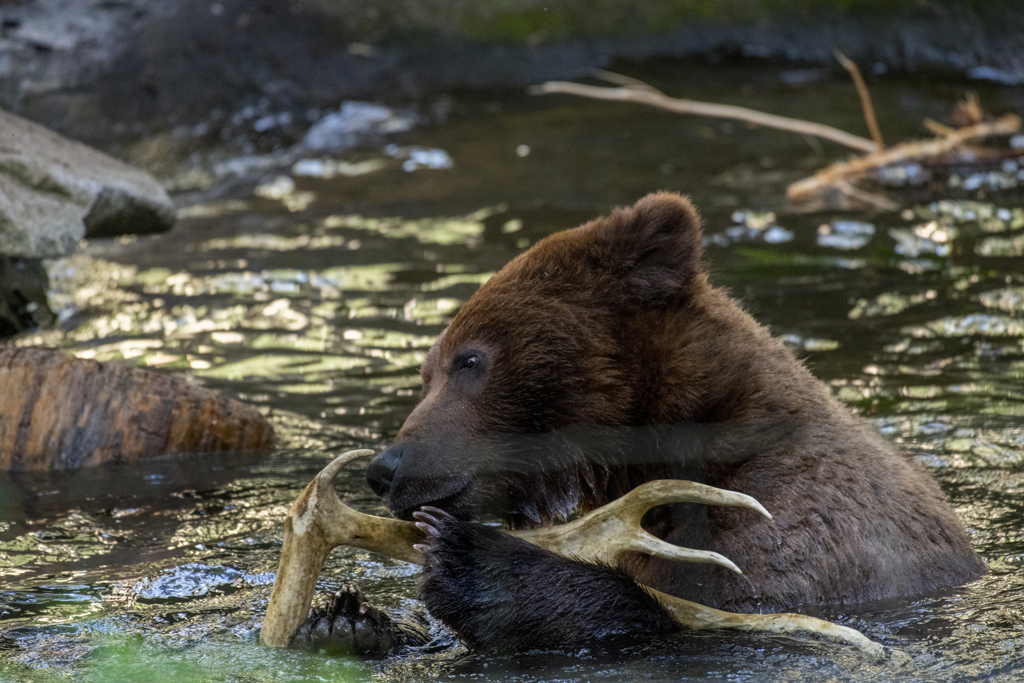For many, it’s a late-winter hobby, but for the keepers in Northwest Trek Wildlife Park’s 435-acre Free-Roaming Area, it’s just another part of their job: shed hunting.
The bull (male) elk are beginning to drop their antlers—a yearly occurrence that happens a few months after breeding season due to a decrease in testosterone.
“We’ve already seen some impressively large antlers drop,” said assistant curator Dave.

When a bull elk drops its antlers, they immediately begin growing a new set.
“Antler grows faster than any other bone,” said Dave. “During the summer months, bull elk antlers can grow up to ¾ inches per day.”

Antlers are covered with a layer of furry tissue called velvet as they grow. Velvet is full of tiny blood vessels carrying oxygen and other nutrients to antler tips. By late summer, the bulls will shed their velvet, and their antlers will harden and strengthen into the formidable weapons a bull elk will use in combat to win the females in the herd for breeding in the fall.

“Every year around this time, we gather the antler sheds for guest education or animal enrichment,” said Dave.
When you see a grizzly bear playing in its pool with a large elk antler this summer, you’ll know where it came from!

Guests can see the Roosevelt elk in the Free-Roaming Area by booking a Wild Drive or Keeper Adventure Tour.